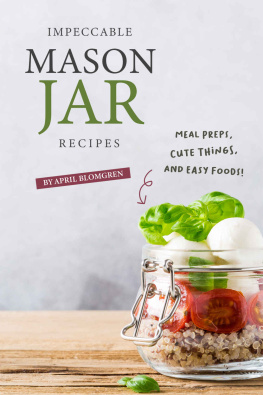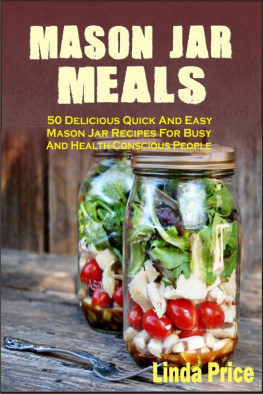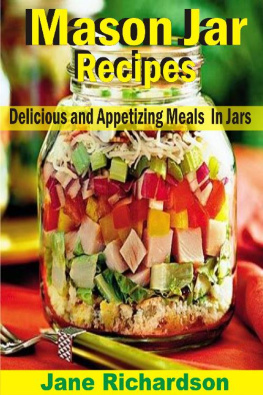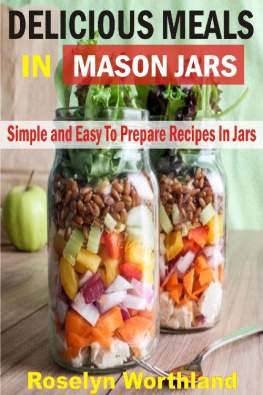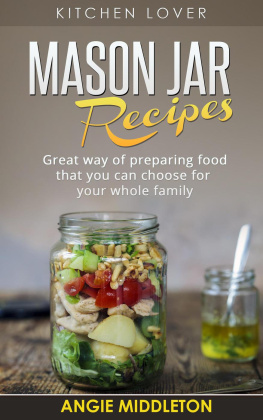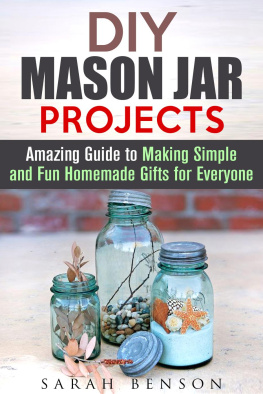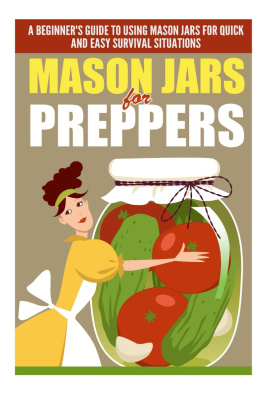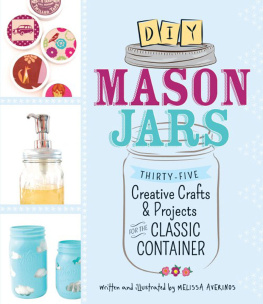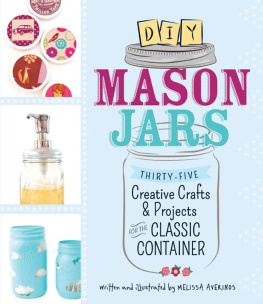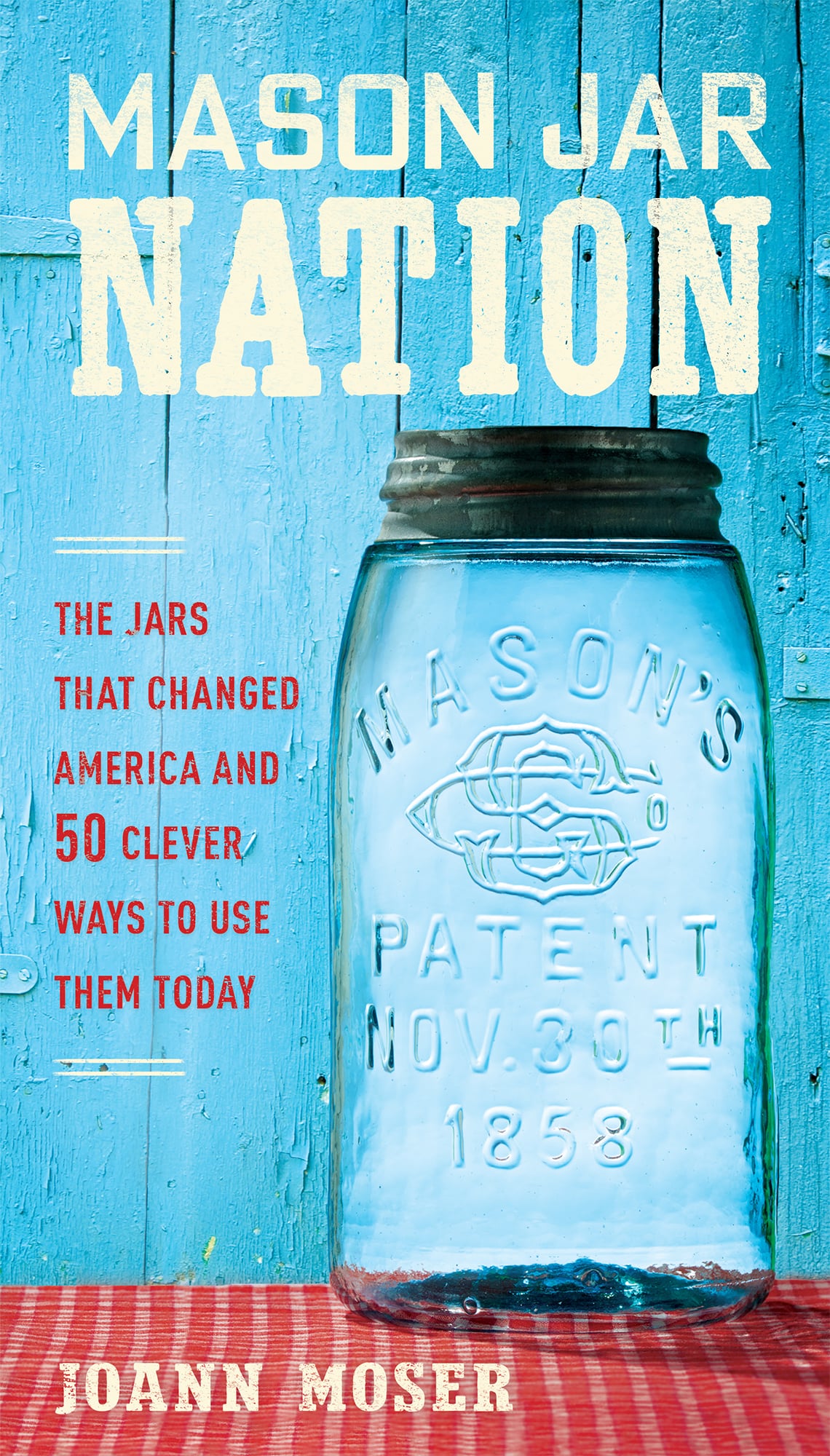I m a writer who likes to make stuff. Ive been doing both all my life. So when approached to write a book about clever ways to use Mason jars, I jumped at the opportunity. When my editor also suggested that the book include history and collectible information about Mason jars, I came down with a case of the nerves. Then I remembered how much I like research. I happily let myself spend hour upon hour tracking down out-of-print books, following links into ever-widening Internet circles, and sending emails to perfect strangers who know more about the subject than I do.
One such email exchange ended with an invitation to a local antique glass and bottle show. While there, I told one of the shows organizers about my project. Mason jars? he said. You want to talk to that guy right over there. He pointed to a sprightly man of retirement age standing at a table on which were displayed a handful of jars. He has one of the best fruit jar collections in the state, if not in the country. I thanked him kindly and made a beeline to that guy.
A fraction of Johns jar collection shown with an assortment of vintage jar wrenches.
Another introduction was made. My names John, he said, and about 30 seconds after that I realized I had struck gold. This wasnt just that guy; this was the guy. I spoke to John for a half an hour or so, but it didnt take long for him to invite me to his home to meet his wife and to see his collection.
Could I take pictures of some of your jars for my book? I asked.
Sure! he said.
About a week later, I was at Johns house, not exactly believing what I was seeing. This is an original Mason Jar? Like a John Mason Mason jar?
He nodded and then told me the story of how he acquired it. (Through eBay, if youre wondering.)
I never knew it was possible to be star-struck by an inanimate object, but I was then.
John went on to show me an amber quart-size Kerr jar that Alex gave to him.
Alex? I asked.
Alex Kerr, he said. Grandson of the original.
(Of course, Alex!)
And this one? I pointed to a particularly charming jar, on it an image of a beaver munching away on a log.
Canadian, he said. The one you really want is the one with the beaver facing left. Now that one is very rare.
(Beaver facing left. Got it.)
During our afternoon together, John dropped names like Atlas, Cohansey, and Hero. One after another, he described unique jar closures, a topic about which John is particularly passionate. He pointed to this jar and that, each with a story behind itwhere it was made, who made it, how it was made, and, of course, how he came to acquire it.
I realized these werent just fruit jars we were talking about. They were slices of history, both Americas and one mans.
When I left Johns house that day, I was determined to hit my musty old books, follow those links even if they took me down rabbit holes, and submerge myself in Mason jar history.
And thats where this book starts: in the past. Well look at some of the heavy hitters of the fruit jar game, including why the terms Mason jar and fruit jar have become synonymous. Well see how the simple containers impacted US history and how history impacted the jars themselves.
Then well cover some jar-collecting basics, including tips to help you identify a fruit jars age, where to buy jars and what prices to expect, and how to collect so you dont become overwhelmed.
Well also further explore the history of Mason jars. Ill offer up the names of some of my favorite websites pertaining to the topic as well as several invaluable books Ive accumulated doing research.
Before we get to the projects, well take a quick-but-necessary detour discussing techniquesincluding safety precautionsused when working with jars as craft items.
As for the projects that made the cut, they had to be fun to make, but also usefullike the jars themselves. Whether they hold a tasty treat or they add a bit of beauty to your world, I hope the projects featured in this book will be just that.
History
A s with many things in American history, the Mason jars story begins in Europespecifically Francewith a gentleman named Nicolas Appert. Born in 1750, Appert grew up to be a maestro in the culinary world. Not only was he a chef; he was also a baker, a pickler, a preserver, and a brewmaster. Its no surprise then that, in 1795, it was Appert who accepted Napoleons challenge to devise a means of preserving food for military consumption. It was the emperor who said, An army marches on its stomach, and those stomachs have to be well nourished, especially if you have dreams of world domination. Ultimately, it would take the next 14 years for Appert to perfect what became known as Appertizingor what we now call canningand win the emperors prize of 12,000 francs for doing so.
Not only was Appert the grandfather of todays preserving techniques, but he was also the inventor of the first modern-day fruit jar. In his seminal work describing his processes, Lart de conserver les substances animales et vegetables, Appert tells us that he used glass bottles made for his special use. The bottles had necks that were 2 to 4 inches in diameter, and they were of equal thickness in every part to prevent breaking. The one thing his bottles lacked was threads. For closures, Appert used corks, which he tapped into place with a whack of a bat, then secured them with wire and finished their seals by applying a homemade luting.
Fruit jars, circa 1850s to 1860s. The flanged lip of the jar on the leftthe oldest of the groupwas constructed as a means to tie string or rawhide to keep the closure intact, which itself may have been rawhide or even paper. The center jars closure incorporated a flat disk that fit inside the channel; hot wax was poured into the reservoir to complete the seal. The jar on the right would have been closed with a simple stopper.


